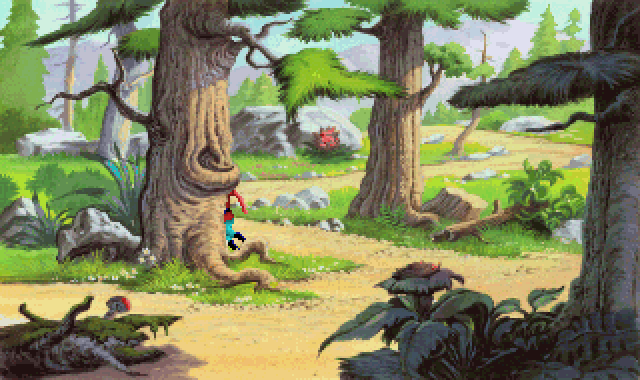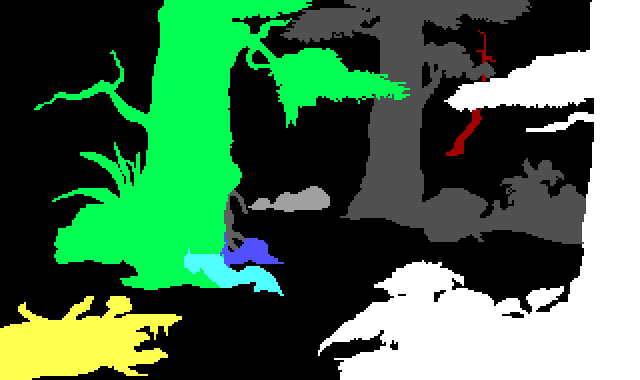Drawing order that is. How does SCI know which bits of a character or whatever go behind which pieces of the background? It’s quite ingenious really.

You take your background image, first. Ignore the lonely king in the middle there, he’s not important right now.

Divide the screen up into fifteen bands. We use the standard CGA colors by convention and I left out black for a little bit of clarity. I didn’t leave out white — that’s the nearest you can be, in front of everything. Note that each screen can set their own thickness for each individual band. Given this information, we can draw a priority screen.

When View objects are drawn, such as Mr. Built-Like-A-Quarterback up there, they are first sorted by their Y coordinate, from furthest to the north to closest to the south. This implicitly places them on given priority bands. Graham for example is right on the edge of the dark gray band, priority 8. That way, when he’s being drawn, the engine can tell what part of the scenery is in front of him and skip those pixels simply by comparing his priority with that of the priority screen, kinda like—

Hey! Get back here!

As you can see, because basically all of the light colors but gray rank higher than dark gray, much of the view isn’t drawn.
If two Views stand on the same priority band, there’s still no problem — they’re drawn in Y order. This has been the case all the way since AGI. SCI2 and later build their priority screens a little differently, but that’s about as much of a technicality as the difference between AGI and SCI0, in that the specific implementation differs, and quite a lot, but the basic technique stays the same.







